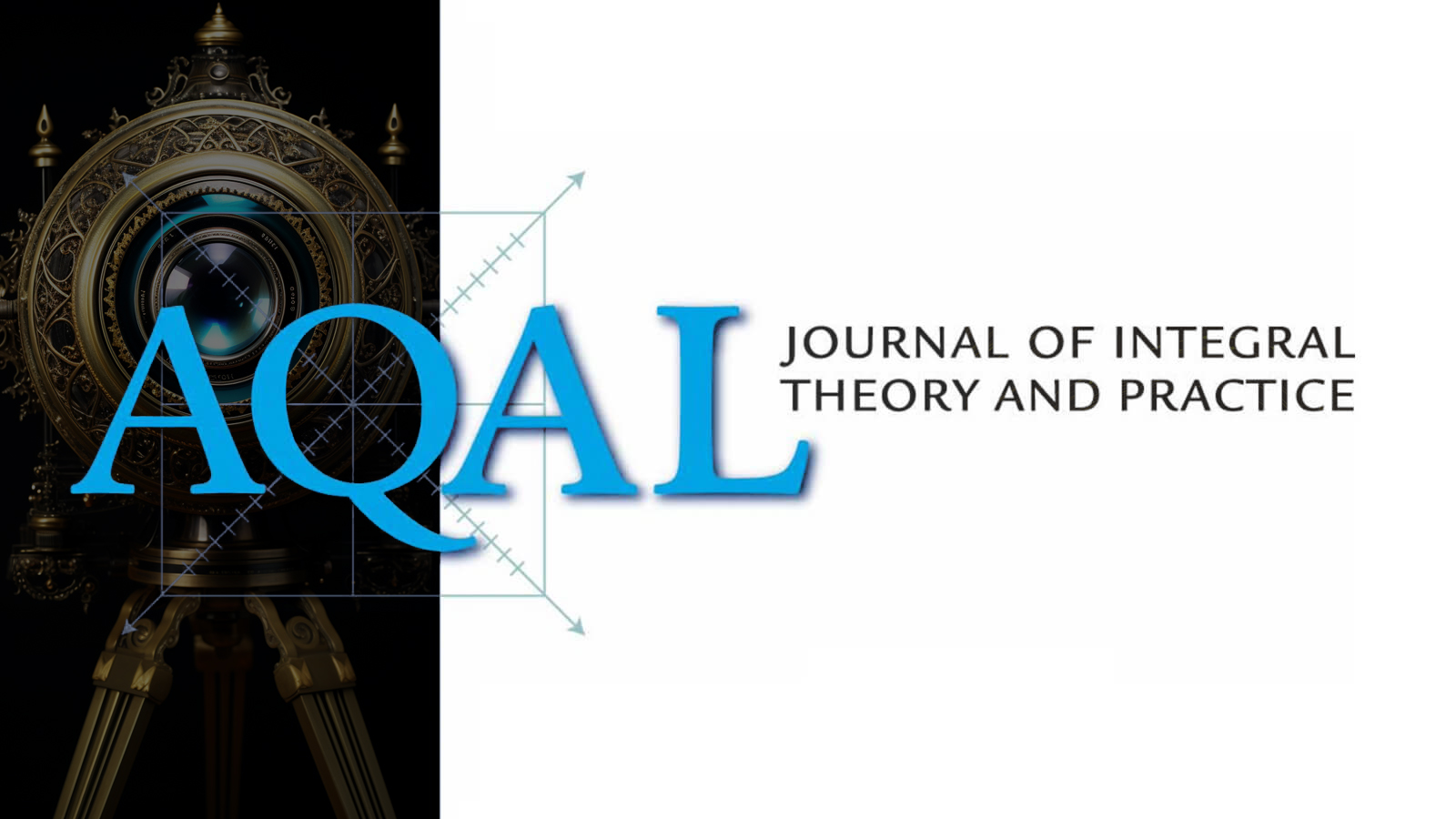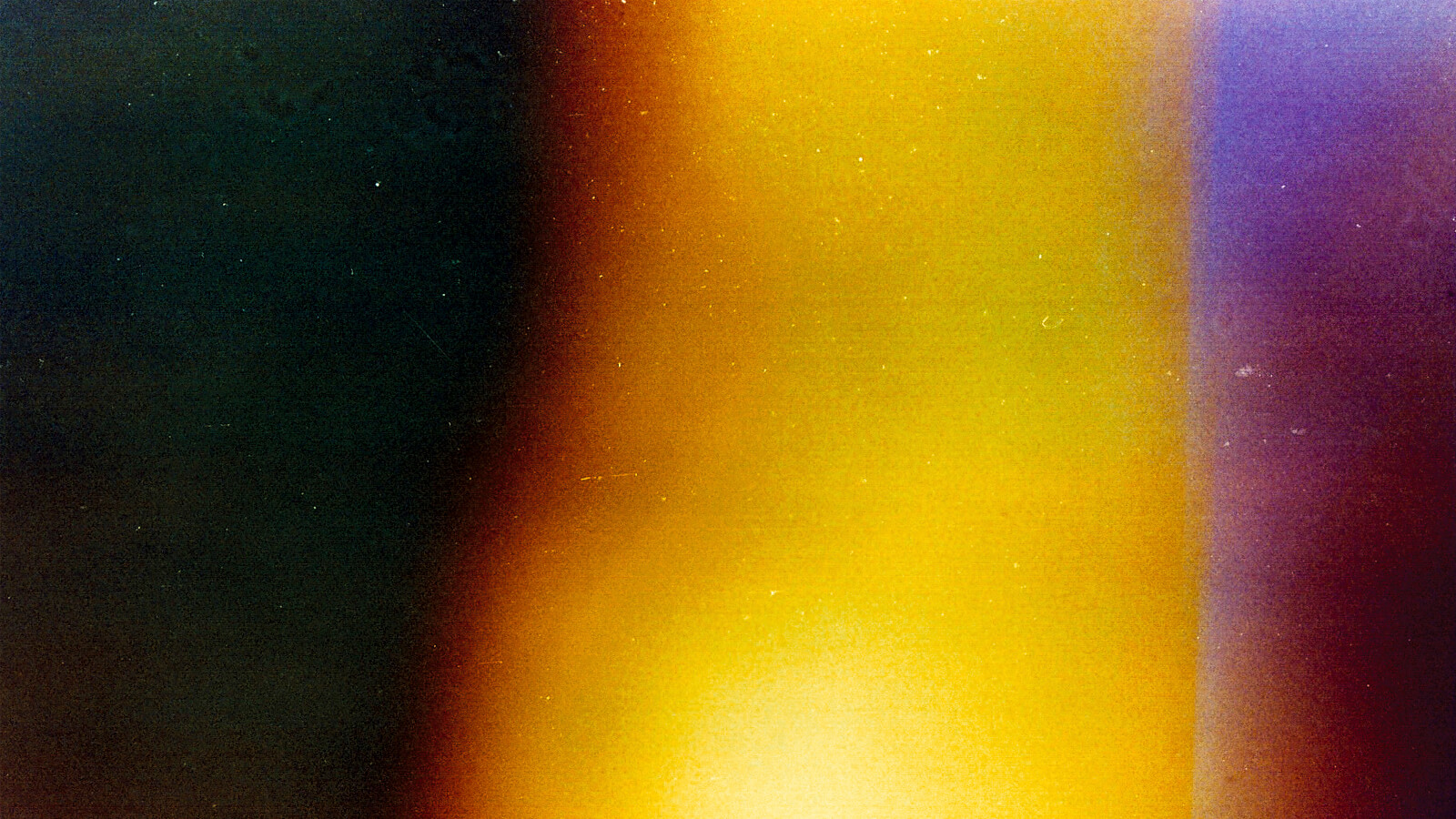
In addition to States, and developmental Lines and Levels, there are also various patterns of shared Characteristic Types or Typologies within all four Quadrants, including:
- Individual-Interior Typologies (Subjective)
- Personality types (introvert, extravert, etc.)
- Gender types (masculine and feminine);
- Individual-Exterior Typologies (Objective)
- Body types (ectomorph, endomorph, mesomorph)
- Blood types (A, B, AB, O);
- Collective-Interior Typologies (Inter-Subjective)
- Communication types (verbal, nonverbal, etc.)
- Culture types (clan, adhocracy, hierarchy, market, etc.);
- Collective-Exterior Types (Inter-Objective)
- Ecosystem types (tropical, desert, mountain, marine, etc.)
- Social system types (agricultural, industrial, informational, etc).
In the cinematic arts there are also various specific cinema-related typologies including:
- Character (protagonist, antagonist, etc.) and story types (arch-plot, mini-plot, anti-plot, etc.);
- Genre (action, drama, comedy, horror, etc.) and style types (Expressionism, Neorealism, Film Noir, etc.);
- Screen format (widescreen, full screen, IMAX, etc.) and media format types (35mm film, 70mm film, digital video, etc.);
- Media platform (theatrical, television, DVD, web, gaming, mobile, etc.) and mediaaudience/market types(general, independent, foreign, etc.).
Through the integrally-informed Typology Lens we can classify these cinematic typologies by quadrant and get a better sense of how these typologies work and relate to each other, the cinematic medium as a whole, and other typology systems beyond the cinema (see chart below).
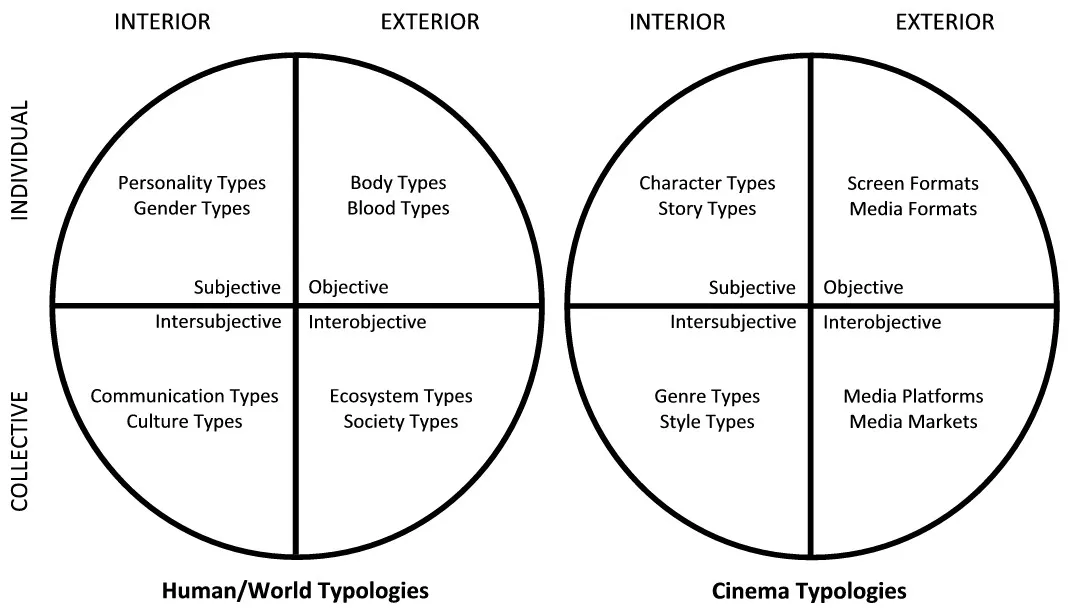
Typologies in Humans, Nature, and Film
Cinematic artists, theorists, critics, and audience members regularly use these cinema-related typologies to quantify, qualify, and discuss the cinematic experience. When we say things like “that was a horror film,” we are qualifying it as being part of a specific genre type; or when we say that a particular film was Spielberg-esque, we are referring to a style typology made popular by director Steven Spielberg; and when we say we watched a film in IMAX or on YouTube, we are referring to screen format and media platform typologies respectively.
In addition to typologies that are specific to the cinematic arts, cinematic works by their very nature also include human/world typologies since to some degree they attempt to represent the human world. Believable screen characters embody real-life human personality, gender and body types; in order for their interactions to be perceived as convincing they must communicate and relate to each other through reflections of real human/world communication and cultural typologies; and for their constructed cinematic reality to be experienced as credible, it must emulate real world atmospheric, environmental and social system types, either directly or in stylized forms.
A third form of typologies also appears in cinematic works. These are what I call cross-over typologies; typologies that bridge the realms of cinematic and real world typologies.
The most common of these typologies is that of the masculine and feminine gender types. Besides masculine and feminine typologies appearing in screen characters, there are also masculine- and feminine-oriented narrative, visual, and auditory structures and patterns in a cinematic work that resonate between the screen and the audience. The most universally recognized form of this cross-over typology is that of masculine- and feminine-oriented narrative structures.
- Masculine-oriented narratives are more event- and action- (agency) driven stories;
- Feminine-oriented narratives are more character- and relationship- (communion) driven stories.
When we say, that movie was a “chick flick” or that was a guys movie, we are commonly referring to these different narrative structure types. This distinction is not as simple as it appears since men and women tend to have both masculine and feminine traits within them to varying degrees; so some men can have a higher degree of feminine traits and some women can have a higher degree of masculine traits.
In general, most viewers tend to lean toward one form of cinematic storytelling over the other, and are less interested in and become less immersed in the opposite form, depending on their masculine/feminine trait tendencies and preferences, and not their actual biological gender.
The reason why one of the common factors of very successful cinematic works is a balance of event- and character-driven narratives is that they appeal to both masculine- and feminine-oriented audiences.

Groundhog Day (1993) and the Climactic Union of Event- and Character-Driven Storylines.
An interesting example of this form of masculine and feminine narrative typology balancing can be found in three integrally-informed cinematic works that masterfully integrate the event- and character-driven narrative structures into a synthesized form: Groundhog Day (1993), The Adjustment Bureau (2011), and Source Code (2011).
In each of these films, the attraction and burgeoning love of the main characters both drive and are driven by events seemingly outside of their control; yet as these cinematic stories progress we get the sense that the force of love itself is conspiring to catalyze the character’s evolutionary development to deeper and more expansive levels of being and becoming. This merging of event- and character-driven narrative elements makes for a more immersive experience for a broader range of viewers, while also creating a strong felt-sense experience of the union of the masculine and feminine which is at the heart of these love stories. With the addition of masculine- and feminine-oriented visual and auditory structures like those found in Source Code (2011), this immersive and felt-sense experience is heightened even further (see image at the top of this post).

The Adjustment Bureau (2011) and the Climactic Kosmic Kiss that Transforms the Characters and the Events Around Them
These three films also represent what I believe to be a distinct form of integrally-informed love story that I am calling the Kosmic Love Story, which would technically be a sub-genre of the Love Story genre type. I use this term because all three of these films are evolutionary journeys that take their characters from egocentric to Kosmocentric levels of being through the vehicle of Kosmically-influenced events, along with the power and force of a romantic love that ultimately transcends the love of an individual “other” and blossoms into a love of all-that-is, or a Kosmic Love.
Like all the other integrally-informed cinematic lenses of perception and expression, the Typology Lens offers the cinematic artist valuable tools for the creation of more resonant and immersive cinematic works. Additionally, an integrally-informed approach to cinematic typologies has the potential to help theorists and critics more succinctly organize the often unwieldy and complex web of cinema-related typologies and more clearly apply them to cinematic theory, history, and criticism. The Typology Lens also offers cinematic creators, theorists, critics, and audience members a way of more fully understanding how we perceive, experience, understand, and communicate about the cinematic arts.
 |
|
 |
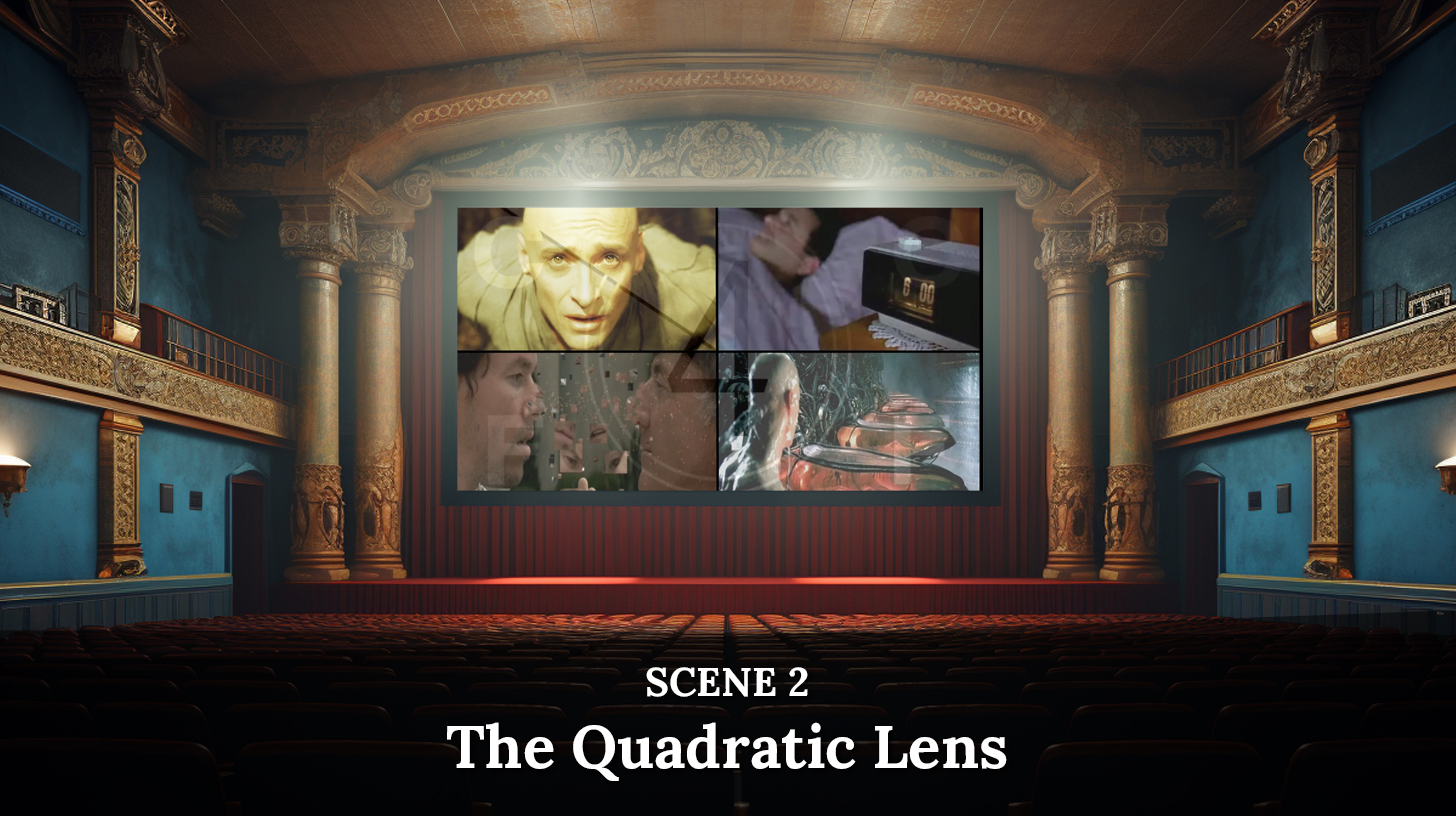 |
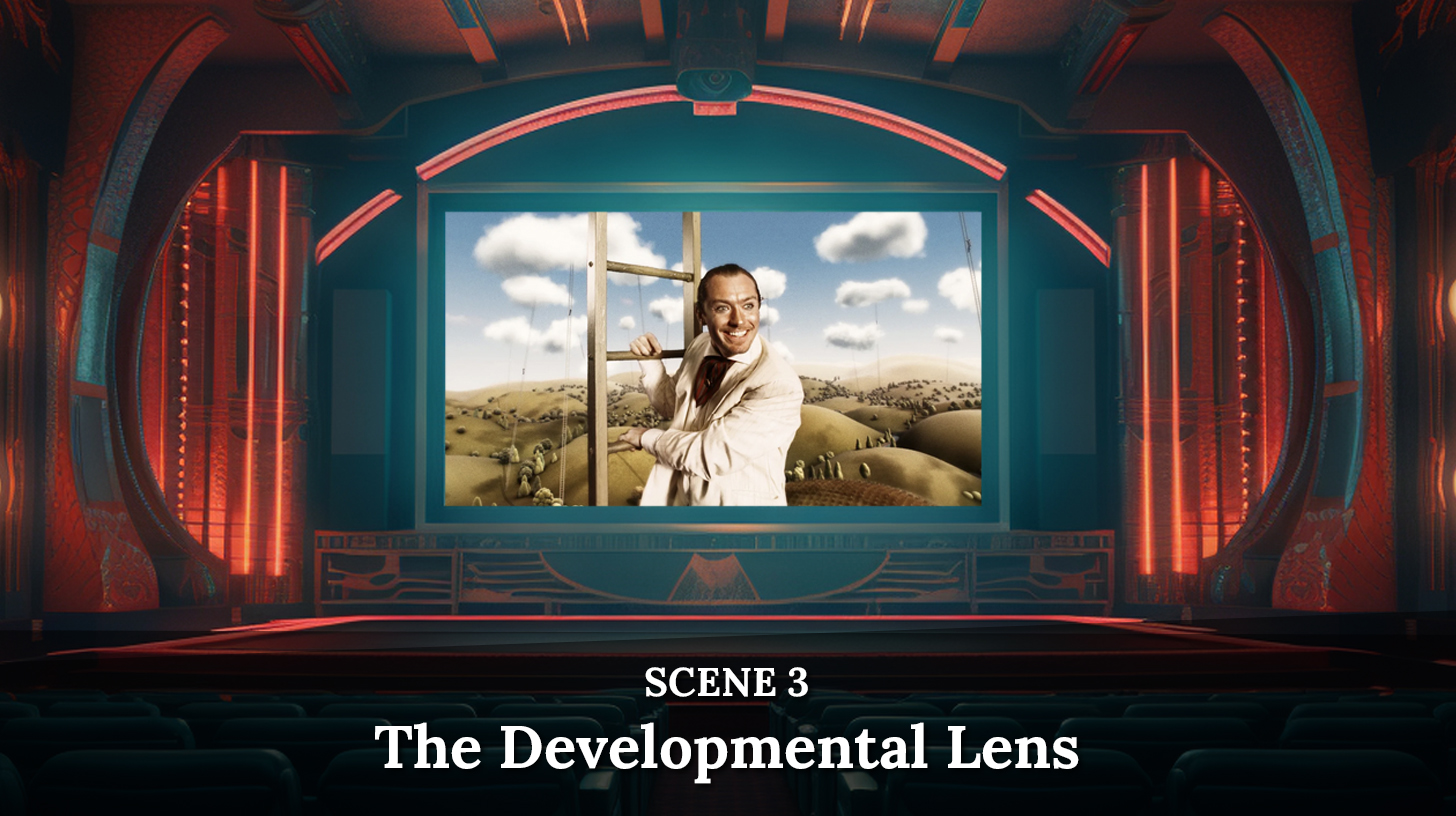 |
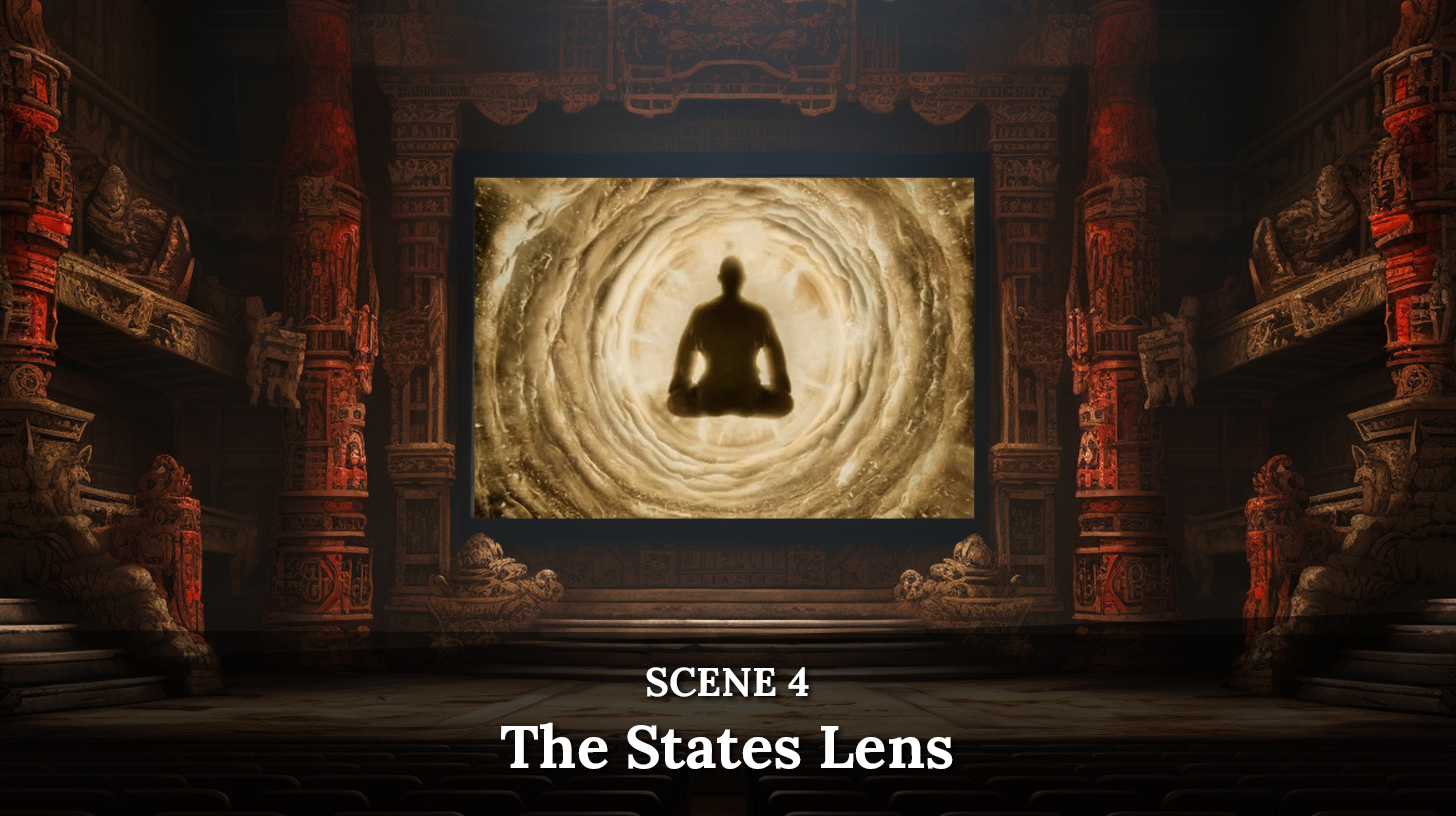 |
 |
 |
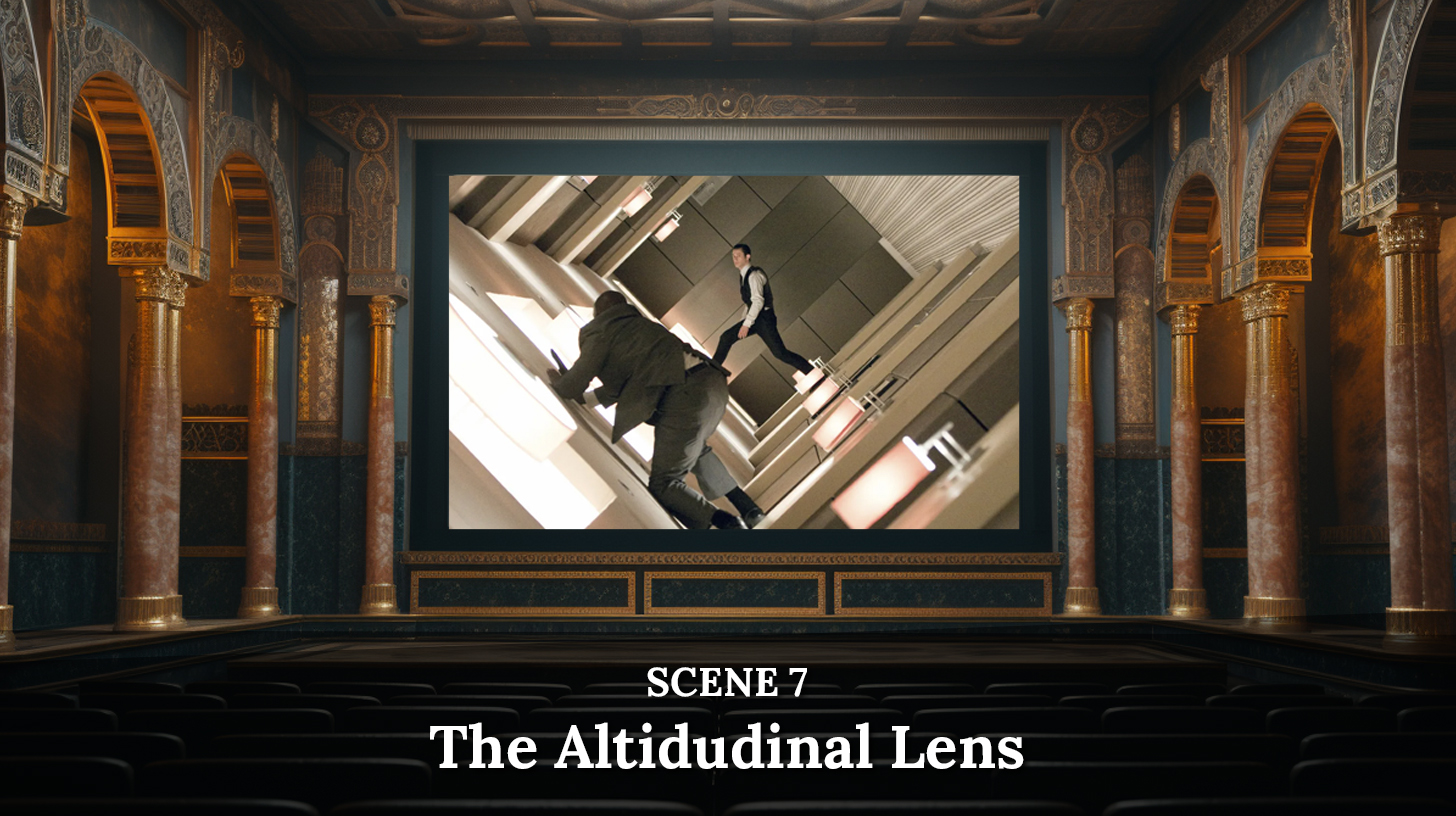 |
 |
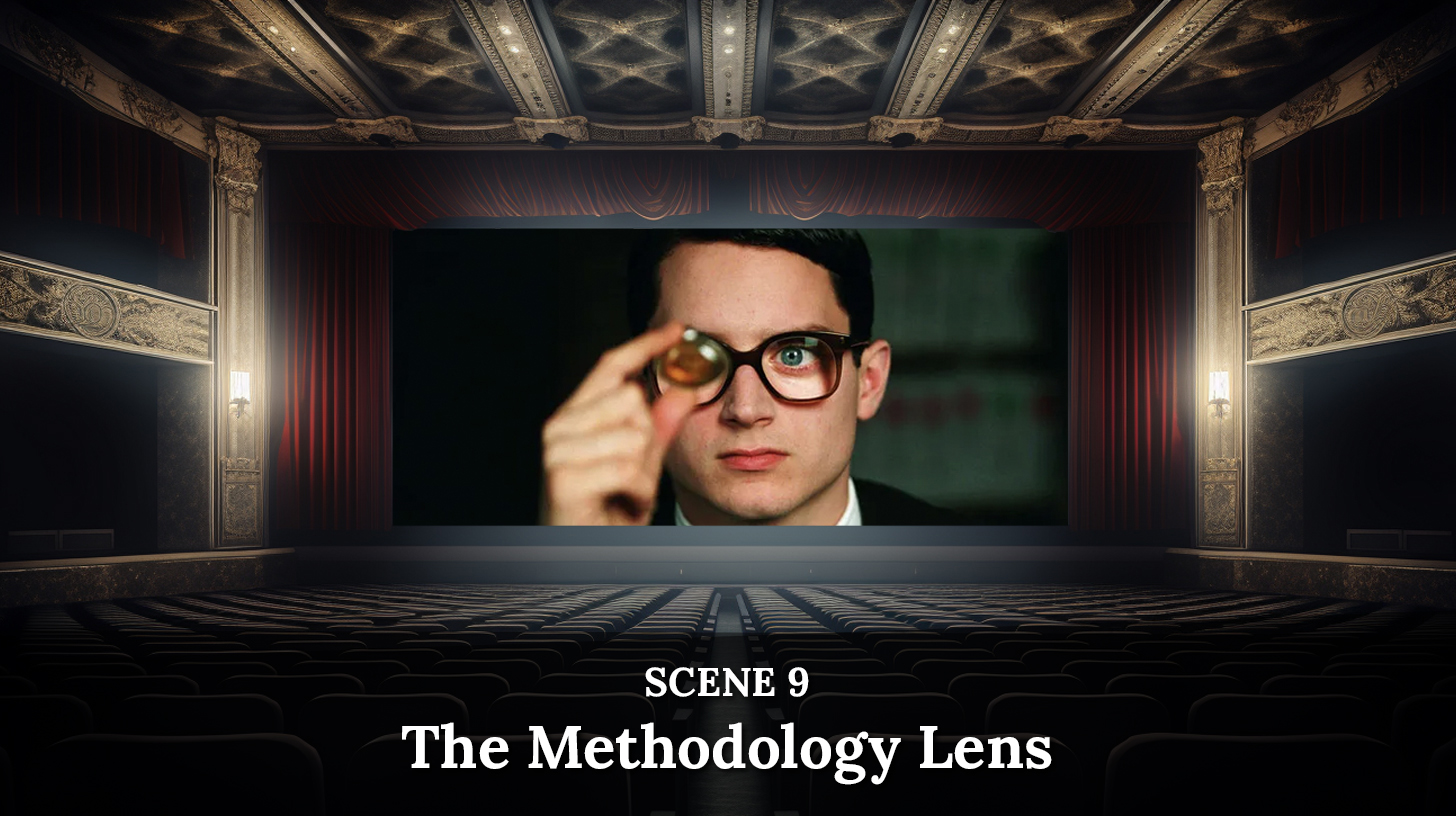 |
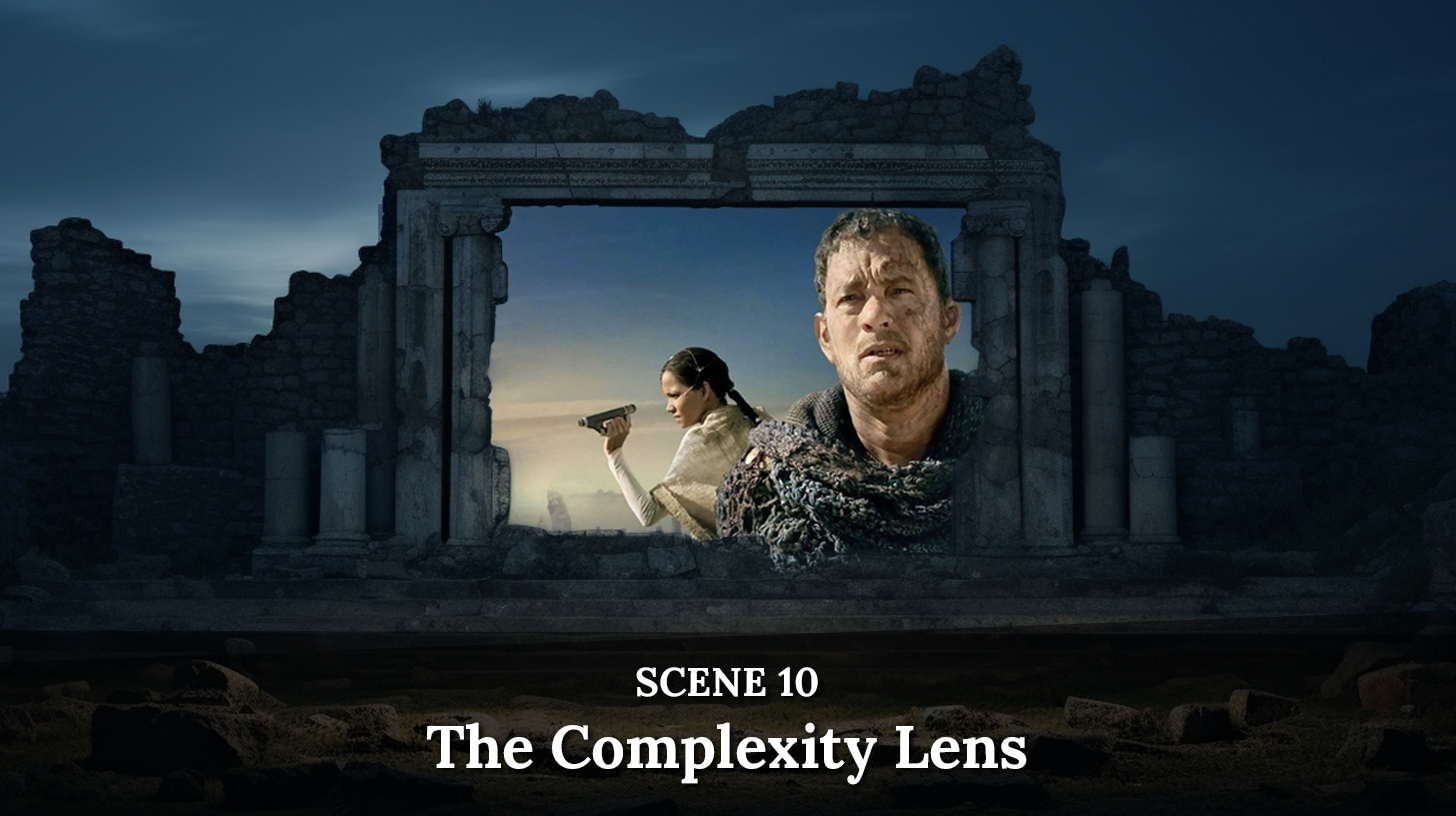 |
 |
|
Related Media
Toward an Integral Cinema
Mark Allan Kaplan
Defining characteristics of what may constitute an integral cinematic work are mapped out and developed into a set of evaluation criteria using the works of Dulac, Gebser, and Wilber. A test of these evaluation criteria with the viewing of several motion pictures is summarized; the results suggest that several past and recent films demonstrate qualities that could be said to constitute an integral cinematic work.
Integral Cinema Studio: A Comprehensive Guide to the Cinematic Experience
Mark Allan Kaplan and Ken Wilber
Mark Allan Kaplan has been curating a groundbreaking integral project, something he calls the Integral Cinema Studio. In this remarkable exploration, Mark and Ken walk us through all of the main elements of Integral theory, using some of our favorite movies to illustrate the basics of the Integral approach while noting how each of these elements has shaped the cinema experience since the invention of film itself.
About Mark Kaplan
Mark Allan Kaplan, Ph.D. is a Transdisciplinary Artist, Filmmaker, Researcher, Consultant, Educator and Media Psychologist focusing on Integral, Transpersonal, and Transformative approaches to Art, Media, and Spirituality. Mark is currently exploring various applications of Integral Theory, including the research and development of an Integral approach to cinematic media theory and practice.


